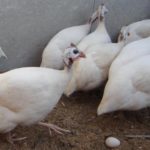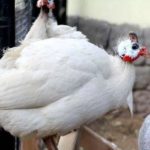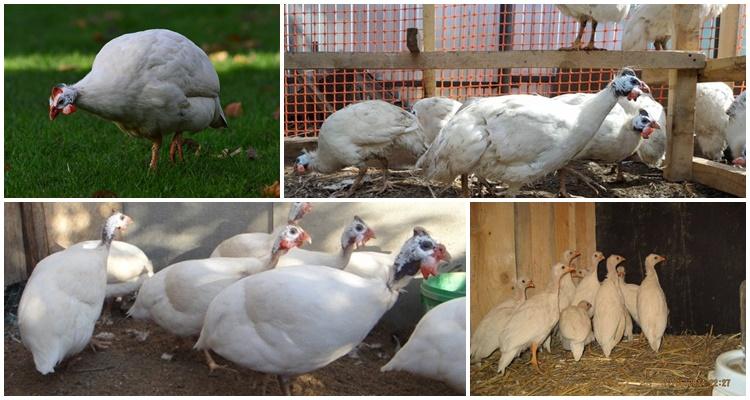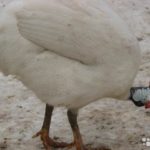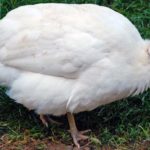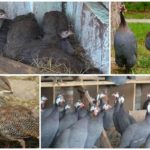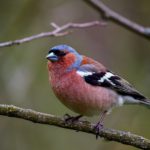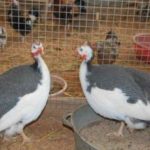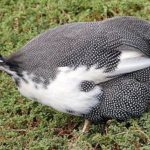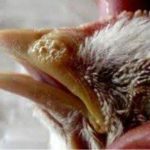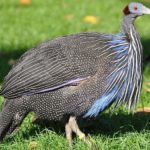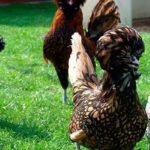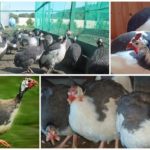White guinea fowl were bred in the late eighties of the last century and almost immediately gained great popularity. This is due to the attractive appearance, rapid weight gain and resistance of birds to many diseases characteristic of birds. At the same time, birds have different species. The white Volga guinea fowl is considered one of the most productive breeds.
Characteristics and appearance of the bird
This breed was developed from the White Siberian breed. Scientists' efforts were aimed at increasing egg productivity and adapting to cold and hot climates.As a result, birds have appeared that can stay in heat of more than +50 degrees for a long time and show their properties advantageously in the harsh conditions of the northern regions.
Birds of this breed are characterized by the following properties:
- Birds have white feathers, in which there are small cream grains.
- Guinea fowl are distinguished by their large size, powerful chest and wide back. Males are characterized by a slightly pointed chest. Males are smaller in size compared to females. The weight of males at six months is 2 kilograms, females - 2.7.
- Birds are characterized by a long neck covered with sparse feathers.
- The head is small in size. At the same time, there is a voluminous skin growth on it.
- The beak looks quite massive and descends downwards. There are earrings on both sides of the beak. They are diamond-shaped and white with a bright red border. Females have poorly developed earrings. They are characterized by a white face and large eyes.
- Birds are characterized by high limbs. Due to this, they run quickly and cover impressive distances in search of food. They can be kept free-range in the steppe zone. In this case, individuals are allowed to be raised in cages.
- The body of birds is adapted to grains and succulent food. They can also be given rougher food and chopped hay.
- Guinea fowl are characterized by a long period of egg production. During the season, it is possible to obtain 120 eggs weighing 45 grams from 1 bird.
- Chicks are born with white down. There are dark stripes on the back.
- Females mature at 8 months. At the same time, the reproductive system of males develops closer to 9 months.
Pros and cons of Volga white guinea fowl
Rules of maintenance and care
Guinea fowl are raised on many large farms or small private farms. They are simple in content. However, there are a few rules to keep in mind. Birds need a spacious aviary. If birds are constantly kept indoors, they will develop poorly.
When creating an enclosure, special attention should be paid to the height of the fence. It must be at least 2 meters. If this requirement is violated, the birds will be able to fly freely over the fence.
In the cool season, birds need to arrange perches. In this case, it is recommended to lay sawdust or straw on the floor. In the warm season, it is important to monitor high-quality ventilation in the poultry house. When arranging an enclosure, it is recommended to provide shaded areas, sunny areas and rain shelters.
Features of feeding
For feeding guinea fowl It is permissible to use compound feed or provide a traditional diet. These birds are suitable for dry types of food that are intended for broiler chickens or birds that belong to the meat category. Birds should receive 90 grams of mixture per day.
To gain weight, it is recommended to feed birds sprouted grain. It is also acceptable to use sunflower cake. If you have a cow on your farm, you should use dairy products - yogurt, whey or cottage cheese.
To increase egg production parameters, it is recommended to feed guinea fowls succulent types of food. You should definitely place a container with shell rock in your yard. The birds readily peck at it. Shell rock helps increase calcium levels in the body.
Is it profitable to breed?
In terms of productivity parameters, guinea fowl are difficult to compare with other types of poultry. However, this does not mean that growing them is unprofitable. The cost of a carcass measuring 1.5 kilograms reaches 1000 rubles. In this case, 10 eggs will cost 200-300 rubles. However, they can be stored for up to six months. Therefore, raising guinea fowl for commercial purposes is quite profitable.
What are they sick with?
When raising white Volga guinea fowl, their well-being must be constantly monitored. Although these birds have excellent immunity, sometimes they get sick. Birds are more susceptible to colds and infectious pathologies. The main causes of pathologies include unsanitary conditions in the room, exposure to drafts, and violation of care rules. Common diseases faced by guinea fowl include the following:
- trichomoniasis;
- mycoplasmosis;
- hemorrhagic septicemia;
- bacillary dysentery.
When the first signs of pathology appear in a guinea fowl, it is recommended to immediately contact a veterinarian. In parallel with therapy, he will definitely carry out anthelmintic treatment. Usually, in the initial stages, birds can be quickly cured. If a pathology is detected, it is imperative to vaccinate the entire livestock. Otherwise, the likelihood of an epidemic is high. The Volga white guinea fowl is distinguished by its beautiful appearance and relatively high productivity. In order for the raising of birds to be successful, it is recommended to strictly follow the rules of caring for them.

